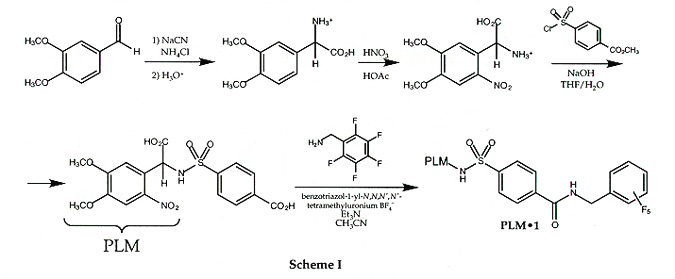research
Site-Specific Delivery and Activation of Drugs
Using PhotoLabile Masks
Polina Kehayova and Prof. Ahamindra Jain
Swarthmore College
Summer 1998
Glaucoma is an eye disease whose symptoms are reduced by
inhibition of Ocular Carbonic Anhydrase (CA).
Since CA is present in every human cell, it is essential
that an inhibitor be activated only after it is delivered
to the specific site of its action. Some of the tightest
binding inhibitors of CA are hydrophobic, which makes them
hard to administer in the form of aqueous eye drops.
This summer
Prof. Ahamindra Jain (one of my Chemistry
professors :-)) and I are carrying out a project which is
connected with developing a new approach for the
site-specific delivery and activation of drugs using PhotoLabile
Masks (PLMs). We plan to mask the activity of the
hydrophobic inhibitor by attaching a hydrophilic PLM to it.
Once the inhibitor is delivered to the specific site of
its action, the PLM will be removed by irradiation with
light, thus activating the inhibitor. The synthetic plan
for the PLM-modified inhibitor that we are suggesting is
shown in Scheme I.
 The PLM is removed by breaking the Sulfur-Nitrogen bond
after irradiation with light. The central part of the
suggested PLM-modified inhibitor is what makes binding
to the CA possible and the pentafluorobenzyl amide
increases the binding energy.
This summer we managed to synthesize the proposed compound
and now it is left to demonstrate the principle of
photocleavage.
Since we have made some exciting progress in this research,
I would like to continue working on it during the school year.
Probably future work on the project will include testing the
system in vivo.
The PLM is removed by breaking the Sulfur-Nitrogen bond
after irradiation with light. The central part of the
suggested PLM-modified inhibitor is what makes binding
to the CA possible and the pentafluorobenzyl amide
increases the binding energy.
This summer we managed to synthesize the proposed compound
and now it is left to demonstrate the principle of
photocleavage.
Since we have made some exciting progress in this research,
I would like to continue working on it during the school year.
Probably future work on the project will include testing the
system in vivo.

